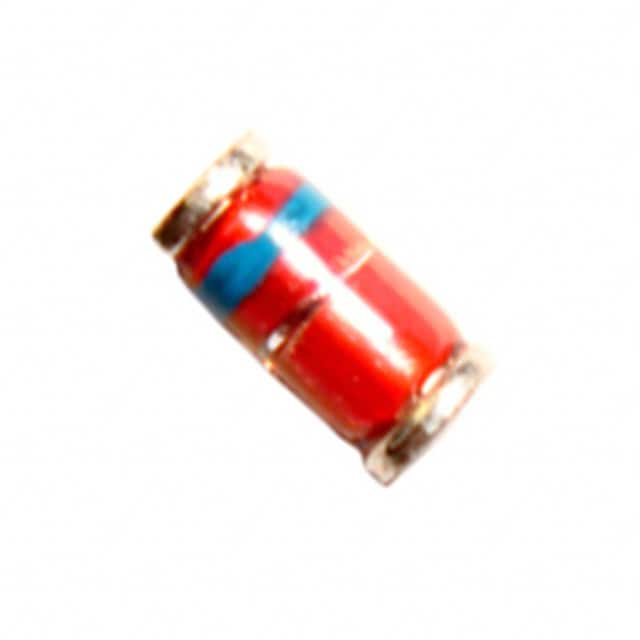Viz Specifikace pro podrobnosti o produktu.

DL4007 Diode:
Product Overview
Category:
The DL4007 diode belongs to the category of rectifier diodes.
Use:
It is commonly used in electronic circuits for rectification purposes, converting alternating current (AC) to direct current (DC).
Characteristics:
- High efficiency
- Fast switching speed
- Low forward voltage drop
Package:
The DL4007 diode is typically available in a DO-41 package.
Essence:
It serves as a crucial component in power supply and voltage regulation circuits.
Packaging/Quantity:
The diode is usually packaged in reels or tubes, with quantities varying based on manufacturer specifications.
Specifications
- Maximum repetitive peak reverse voltage: 1000V
- Average forward current: 1A
- Peak forward surge current: 30A
- Forward voltage drop: 1V at 1A
Detailed Pin Configuration
The DL4007 diode has two pins, anode, and cathode. The anode is denoted by a longer lead, while the cathode is marked with a band around the diode body.
Functional Features
- Efficient rectification of AC to DC
- Fast response time
- Low power loss
Advantages
- High voltage capability
- Fast recovery time
- Low cost
Disadvantages
- Relatively high reverse recovery time compared to other diodes
- Susceptible to thermal runaway under certain conditions
Working Principles
The DL4007 diode operates on the principle of unidirectional conduction, allowing current flow in only one direction. When a positive voltage is applied to the anode with respect to the cathode, the diode conducts, allowing current to flow. In the reverse bias condition, the diode blocks the flow of current.
Detailed Application Field Plans
The DL4007 diode finds extensive use in various applications, including: - Power supplies - Voltage regulators - Rectifiers in electronic equipment - Inverters and converters
Detailed and Complete Alternative Models
Some alternative models to the DL4007 diode include: - 1N4001 - 1N4004 - 1N4007 - FR107
In conclusion, the DL4007 diode is a widely used rectifier diode known for its high efficiency and fast switching speed. Its application spans across diverse electronic circuits, making it a fundamental component in modern electronics.
[Word count: 314]
Seznam 10 běžných otázek a odpovědí souvisejících s aplikací DL4007 v technických řešeních
What is DL4007?
- DL4007 is a commonly used rectifier diode with low forward voltage drop and high surge current capability.
Where can DL4007 be used in technical solutions?
- DL4007 can be used in various technical solutions such as power supplies, battery chargers, voltage regulators, and signal demodulation circuits.
What is the maximum forward voltage of DL4007?
- The maximum forward voltage of DL4007 is typically around 1V at a forward current of 1A.
What is the reverse voltage rating of DL4007?
- The reverse voltage rating of DL4007 is 1000V, making it suitable for applications requiring high reverse voltage protection.
How does DL4007 perform in high-frequency applications?
- DL4007 has a fast reverse recovery time, making it suitable for high-frequency applications such as switching power supplies and RF circuits.
Can DL4007 be used in bridge rectifier configurations?
- Yes, DL4007 can be used in bridge rectifier configurations to convert AC voltage to DC voltage in power supply circuits.
What are the thermal characteristics of DL4007?
- DL4007 has low thermal resistance and can dissipate heat effectively, making it suitable for high-power applications.
Is DL4007 RoHS compliant?
- Yes, DL4007 is RoHS compliant, ensuring that it meets environmental standards for hazardous substances.
What are the typical packaging options for DL4007?
- DL4007 is commonly available in surface mount (SMD) packages such as SMA, SMB, and SMC, as well as through-hole packages like DO-41.
Are there any common failure modes associated with DL4007?
- Common failure modes for DL4007 include overvoltage stress, excessive forward current, and thermal overstress, which can lead to degradation or failure of the diode.

